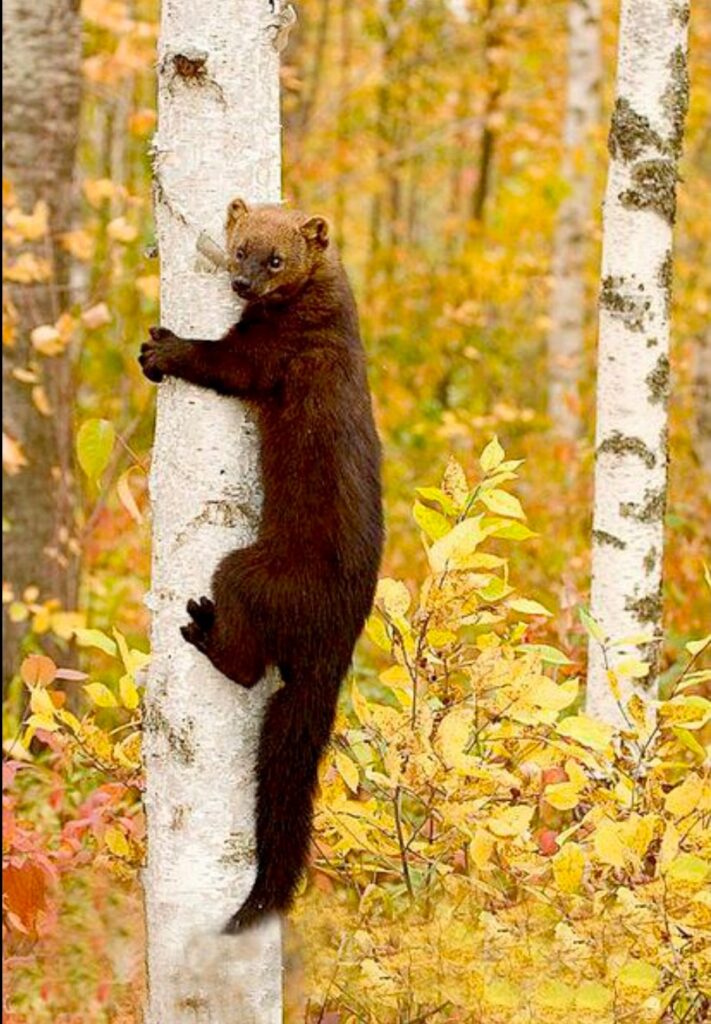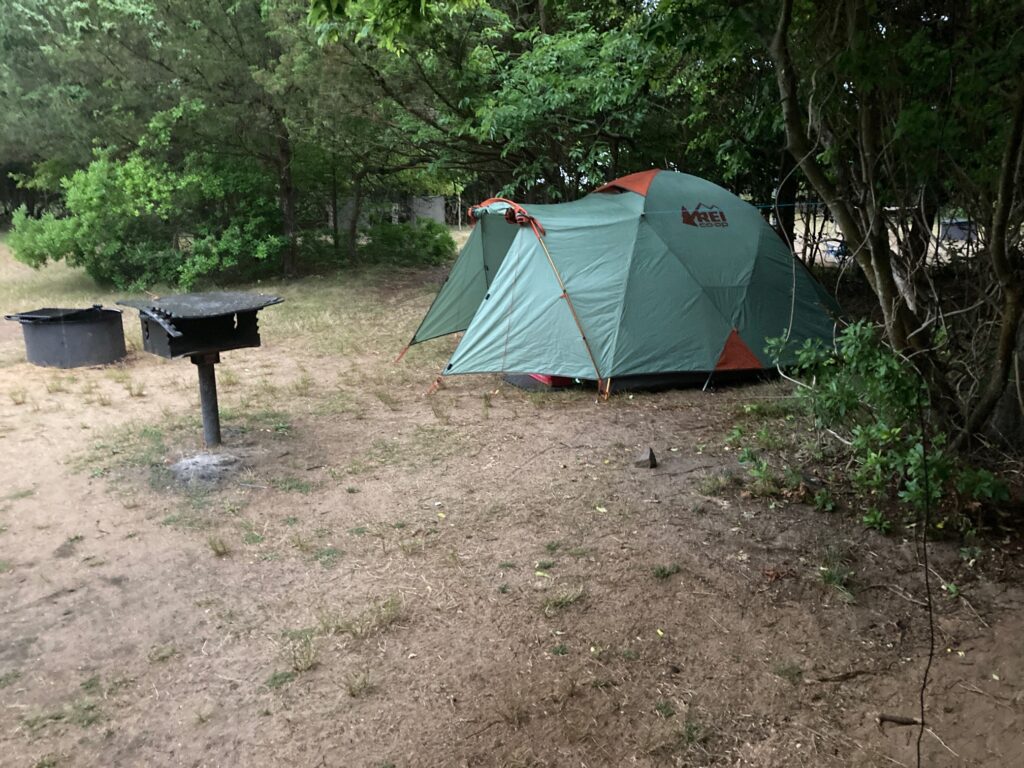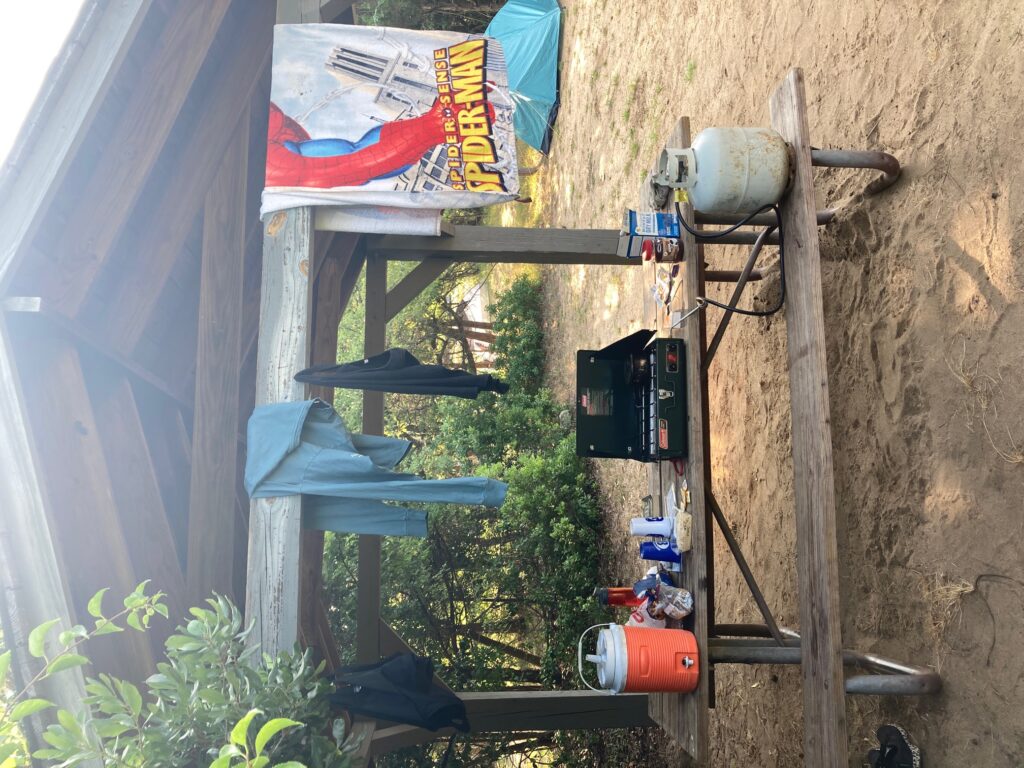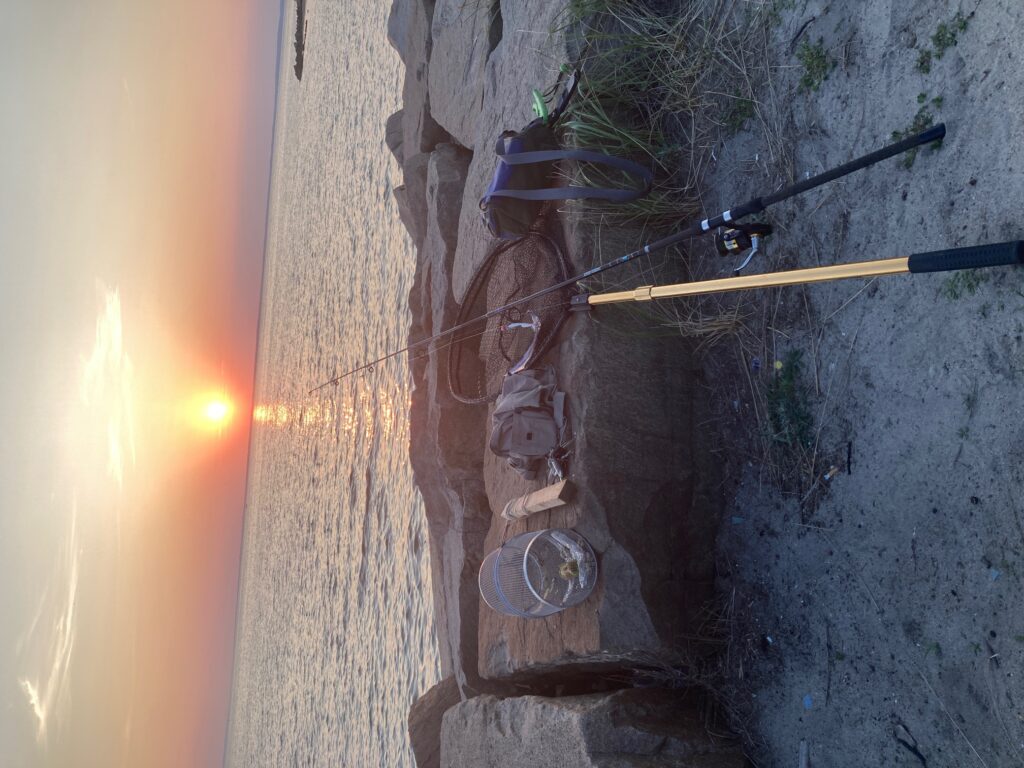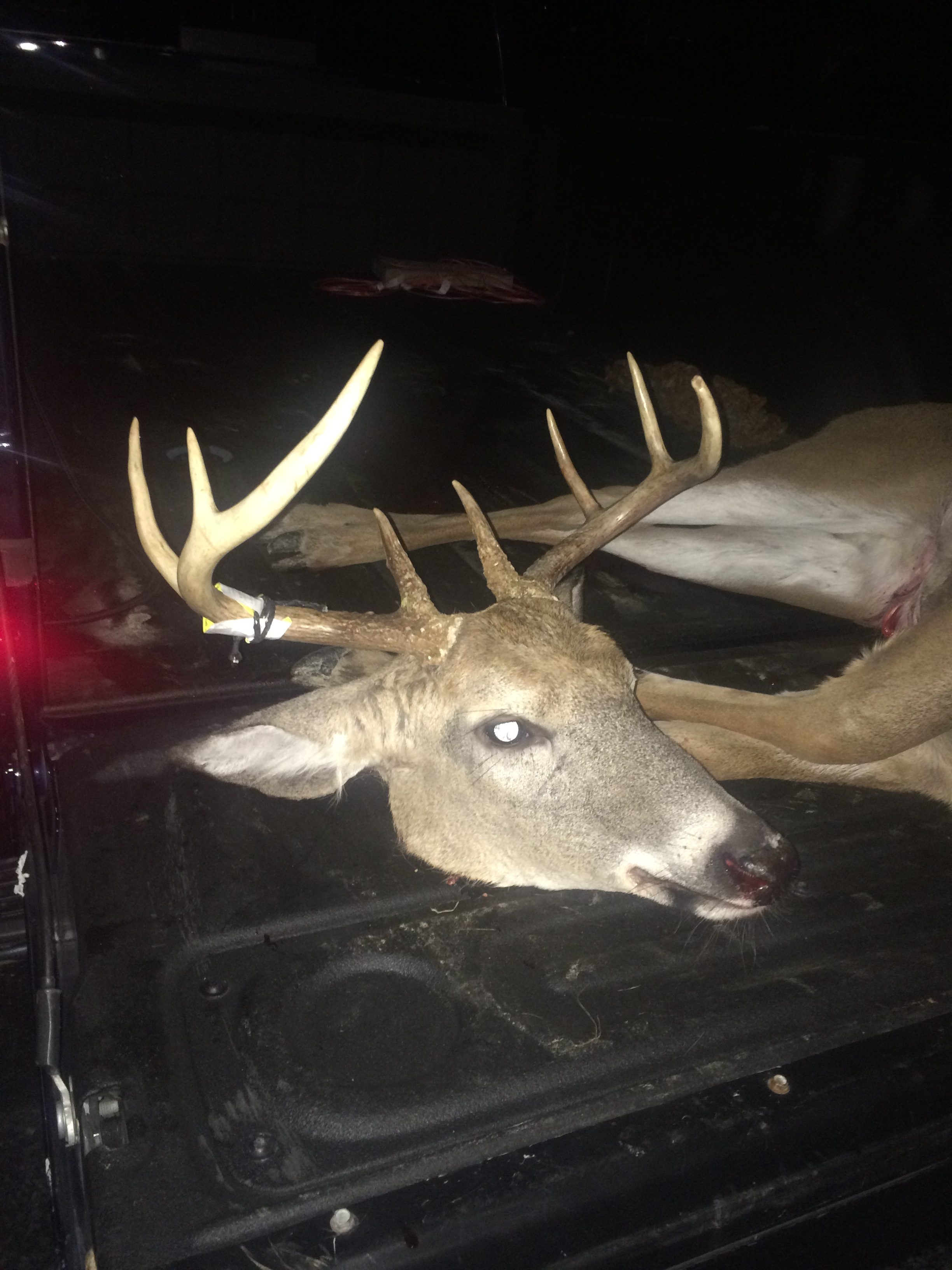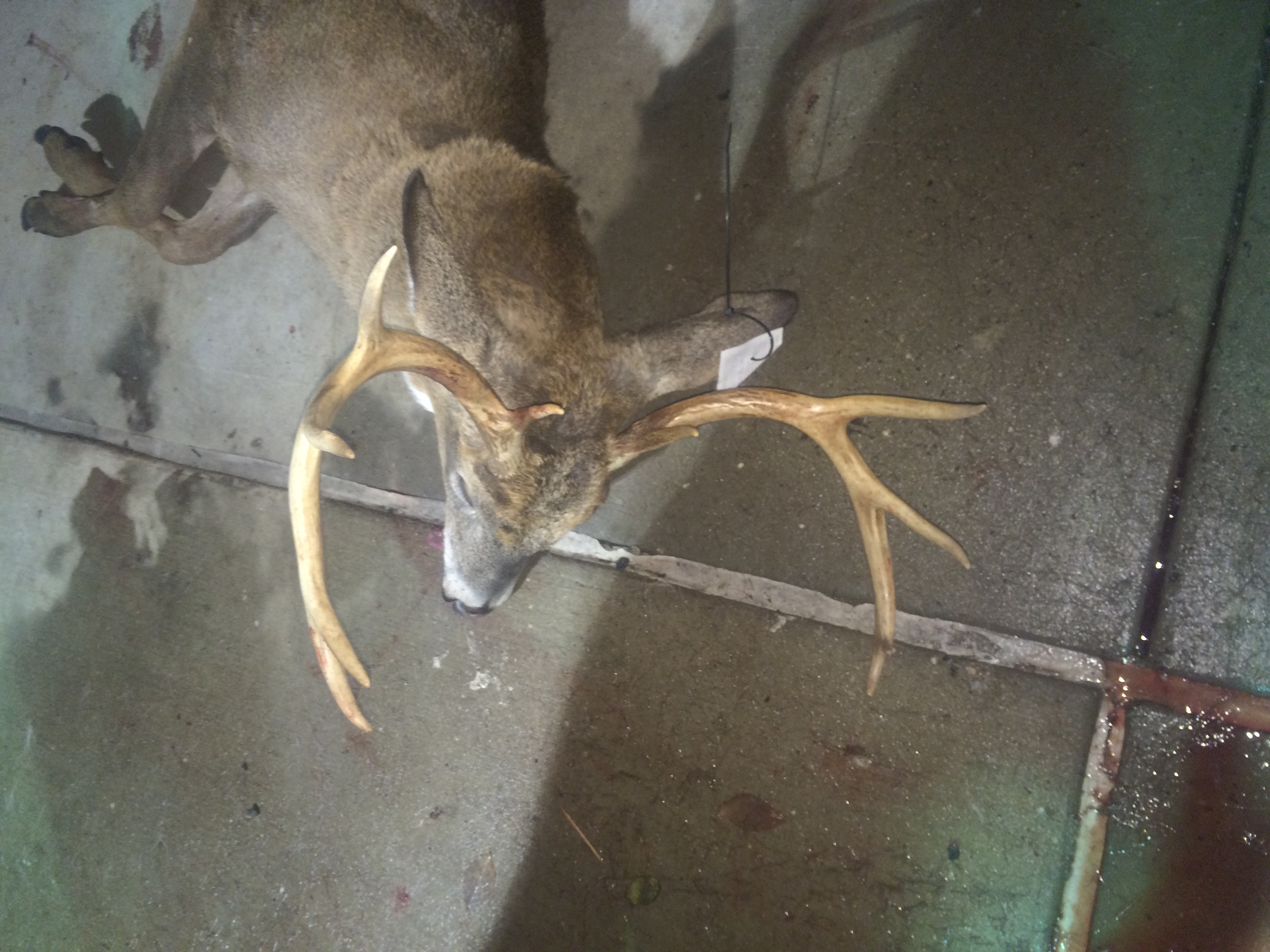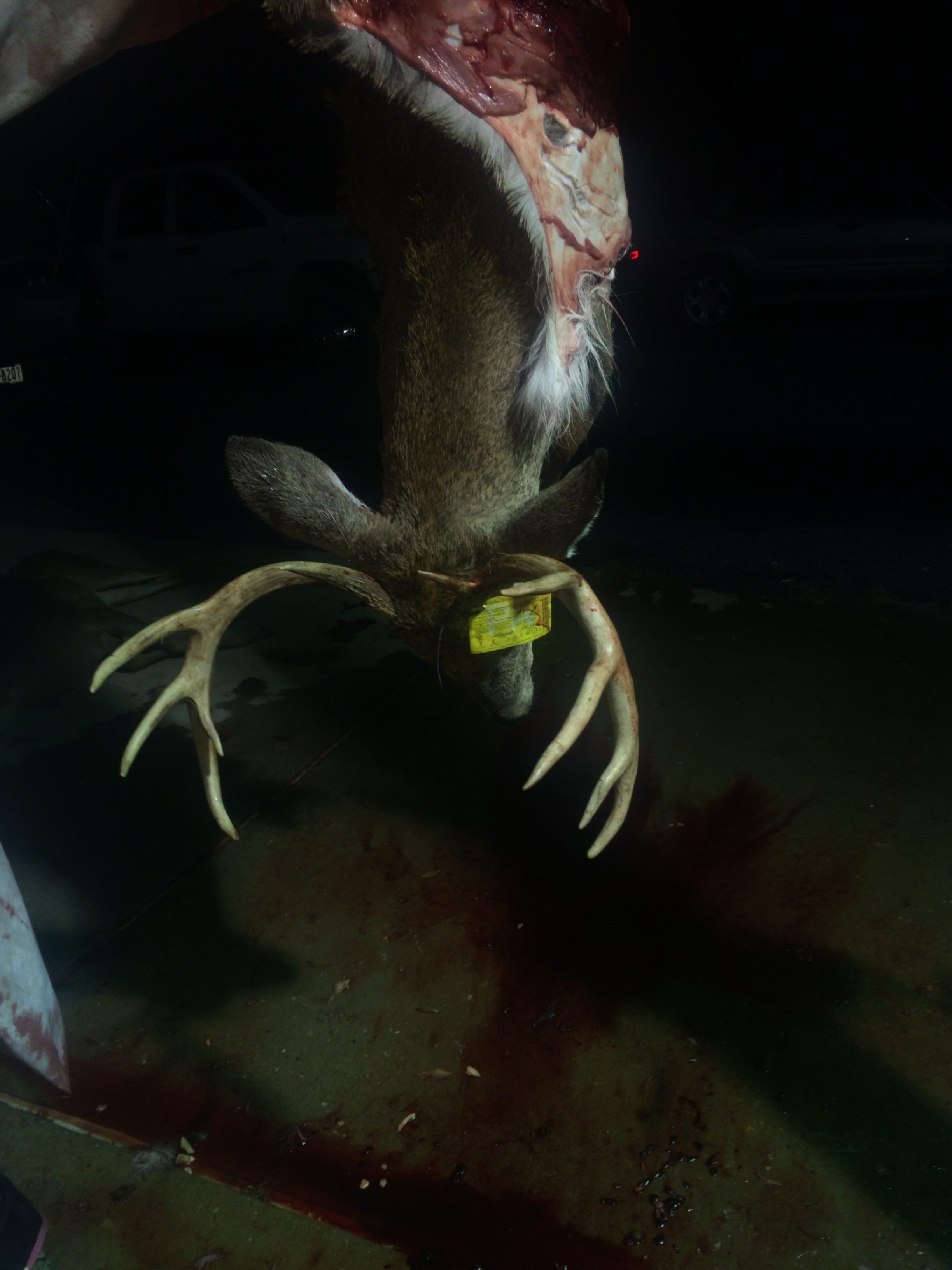Posts Tagged → wildlife
talkin turkey
Spring Turkey Season is almost upon us here in Pennsylvania, and around the country. A great deal of the wild turkey breeding season is already behind us, and the significant challenge of calling in a “lovesick tom” at the tail end of the breeding period is now laid before several hundred thousand dedicated and novice turkey hunters alike, here in PA.
Couple of reminders, and one big observation:
- Please do not drive up and down country roads making hen calls out the window of your vehicle, waiting to hear a gobble in response. While it may bring some hunters a premature auditory orgasm to hear the lusty gobbler responses, all this activity really does is educate turkeys about fake calls by fake hen turkeys. And when tom turkeys get unnecessarily educated by guys peeing in their pants with excitement, said toms become a zillion times harder to hunt and bag. It takes the fun out of an already difficult hunt. Don’t do it. Please.
- Clearly identify your male turkey’s red or white head before pulling the trigger on its neck. If all turkey hunters only pulled the trigger when they had absolutely positively identified their target, there would be no heartbreaking hunting accidents during spring turkey season. And when you read the facts surrounding those hunting accidents or negligent shootings, you realize that some people are about to pee in their pants with excitement and so they shoot a human being “in mistake” of a turkey. By only putting our trigger finger on the shotgun trigger when the gobbler’s head is both clearly visible and in range, we bypass a lot of dangerous excitement.
Finally, in a certain nook up north, I have been enjoying the sounds once again of spring gobblers sounding off for probably six weeks now. Few have been the wild turkey gobbles there over the past ten to twelve years, an absence always correlated with the physical evidence of a resident fisher. In other words, fishers have eaten the hell out of our wild turkeys, and only after someone traps the local fisher do the turkey populations begin to rebound. This fact has been driven home for me year after year across southcentral, central, and northcentral PA; fishers have been real hard on our wild turkeys.
Not to say that fishers don’t have a place in Penn’s Woods, they do, of course. But the policy implications of widespread fishers should have been better considered before the giddiness of super-predator 100% ecosystem saturation overtook wildlife managers in the late 1990s and early 2000s. And now Pennsylvania is contemplating releasing pine martens into Penn’s Woods…..knowing already that they eat the hell out of grouse, and that PA’s grouse are in very bad shape.
I don’t mind having a decent population of fishers and pine martens up north in the Big Woods, where they will have the least amount of impact on other wildlife across the entire state. What I do object to is sacrificing the enormous wild turkey conservation success story on the altar of “more predators are better than few” mindset of some wildlife managers. Sometimes, we just have to accept that we can’t wind the clock back to the year 1650, or even 1750, because the few successes we have managed to rack up, like wild turkeys brought back from extinction, is as good as it can get.
Sometimes, good is good enough, and the rest we just need to leave well enough alone.
PGC’s strange hunter survey
Today a Pennsylvania Game Commission email arrived, asking if I would participate in a brief hunter survey. Being 100% opinionated about everything, naturally I acquiesced. “Shy” was maybe used to describe me when I was young, but not as an adult. Because I consider myself a careful thinker, committed only to First Principles from America’s founding and to The Bible, and being relatively uncommitted to mass movements or parties, I enjoy sharing my perspectives with people who are open minded and interested in understanding different points of view than the prevailing narratives hawked by the Mainstream Media Corporate Industrial Complex.
The PGC survey consisted of really just three questions, all of which were about hunting waterfowl such as ducks and geese.
First question was did I hunt ducks last season, to which I responded No, I Did Not Hunt Ducks Last Season. The reason being that although I live just two blocks from that once famous migration route on the mighty Susquehanna River, the current duck migration down the Susquehanna River is not even a shadow of its former self. Rather, the duck migration here does not exist and has not existed for twenty years. I see more ducks lounging about and crapping on people’s yards in Italian Lake City Park across the street from my front yard than I see out on the Susquehanna River sitting on a bucket with a shotgun in my hand.
So, unless I travel to the Chesapeake Bay to hunt ducks, it is rare for me to get out after them any longer. Without Sunday hunting like all the surrounding states have, my opportunities for waterfowl hunting in Pennsylvania are pretty limited to what I can access quickly and easily. Like the dead Susquehanna River within sight of my dining room window.
Second question asked which Goose Zone I hunted in. Easy enough to answer.
Third question, which was broken down into three different alternatives, pertained to which of three unbearable and useless goose hunting seasons I liked or did not like, and how much I liked them or disliked them. All three alternative seasons PGC presented were unnecessarily fragmented from late October into February, and included very little early season but lots of late and really super late season. The problem being that the southward goose migration is heaviest in the part of October when the PGC shuts down our goose hunting, and the goose migration is entirely over by the time the PGC season opens back up. Fat lot of help these potential seasons offer!
This is a curious situation, which I have never had satisfactorily answered. Some hunters I know say that the Susquehanna River Waterfowlers, to which the PGC looks for hunter guidance, is made up of anti-Sunday hunting fuddy duddys who would rather give up hunting entirely than see Pennsylvania hunters get our share of the goose migration and also have Sunday waterfowling. True or not, this is what I am told.
Other hunters I know say that the PGC is hopelessly tangled up with the US Fish & Wildlife Service on all kinds of policies, not the least of which is that PA has a boatload of passionate hunters who, given the least opportunity, will, it is said by wildlife management officialdom, destroy, decimate, eliminate, and exterminate every duck, goose, gander, coot, loon, pimpernel, plover, and shoveler that flies, walks, waddles, crawls, or ducks through the migration route between New York and Maryland. And so, according to this view, Pennsylvania waterfowl hunters must be artificially hamstrung and kept from going afield when the birds are flying the most. Again, I do not know how much truth there is to this, though I will testify to the fact that Pennsylvania does in fact field a lot of hunters. A lot.
And so we get to my response to the three ridiculous seasons proposed in the PGC survey: Not one of them makes any sense; all three are equally nonsensical alternatives.
What is the point of giving me various dates to hunt if the animal we are hunting is no longer in the venue in those dates, but has long since flown the coop and is doing leisurely backstrokes in Florida and Louisiana?
It appears that the PGC knows its three silly seasons are indeed silly, and yet the agency is overtly committed to them.
“You can have a crap sandwich, a sh*t sandwich, or an imaginary sandwich,” is what PA waterfowl hunters are presented here.
This means Pennsylvania waterfowl hunters outside the Philly area southeast corner and outside a couple of interesting little “habitat and flyway bubbles” around Lake Erie and Shenango Lake in Western PA are officially SOL and just wasting their time sitting with a shotgun on a bucket and freezing solid past late December.
This current no-win situation begs for a bigger than life solution, but it also reminds me of the old Sunday hunting situation, where the PA Farm Bureau stole our private property rights for decades by artificially preventing any Sunday hunting. Only by marginally nibbling around the political edges did PA hunters finally get three weenie Sundays to hunt big game, and one suspects that such a small and unsatisfying “solution” is what is in store for PA waterfowlers, if a solution is to be had at all.
Maybe PGC will add more waterfowling days afield in March, when every single last duck and goose north of the Mason Dixon Line has landed in Costa Rica for the winter. Thanks but no thanks, PGC.
I for one, though I undoubtedly represent many others, would like to hunt ducks and geese in Pennsylvania at or closely around the same times/dates/days that hunters in New York are hunting them. But that would make sense, and if there is one thing I have learned as a PA waterfowl hunter, our seasons here are not intended to make sense.
Midsummer report
My apologies for the long absence here. Summer is in full swing and our family has been operating at full tilt speed. Time only for doing things, and none for writing about it all, until now.
First off, our oldest kid was married on Independence Day. Held at a pretty and historic farm, it was a fantastic wedding, and we feel like we acquired a wonderful addition to our family. However, the preparation necessary for that event took up a lot of time and energy, for many months. And then there was the recovery week. And then there was the vacation week. Hence no blog posts. Full credit to my wife for all of the wedding planning.
At least I myself am back in the saddle, while other people around me are still recovering from their vacation. Not everyone does well with the surf fishing bum lifestyle, including sleeping on the beach, eating questionable food from a warm cooler that has been pawed over and drooled on by feral raccoons, and drinking fetid water. I myself thrive in this kind of environment, and so I am back to report back to our three readers.
What can I say about the wedding other than I fired our small black powder cannon seven times, for good luck. It was Independence Day, and while the venue does not allow fireworks, they did allow the cannon (it’s a cast iron, steel sleeved replica swivel gun with a 1.75″ bore). And in my speech as the bride’s father, how could I miss an opportunity to point out that Independence Day was brought to us by citizens with guns? That is a fact, is it not?
And (of course, I guess) I heard back afterwards that some of our wedding guests were offended by the cannon and also offended by my mention of the origins of American freedom – citizens with guns. You can’t make this stuff up if you tried, like it’s a Hollywood movie script caricature of spoiled rotten children who get everything that Planet Earth can provide and yet nonetheless complain about it. Something like “The food here is terrible and the portions are so small.”
Are Americans now really offended by Independence Day fireworks? Are they offended by displays of patriotism and mentioning of historical facts that unfortunately run contrary to some evil political narratives that privately owned guns are bad and our freedom was brought to Americans by a immaculately conceived federal government that descended from Heaven? Are some wedding guests now so crass that they actually complain about the bride’s father setting off his celebratory toy cannon for the enjoyment of all the normal fun-loving people in attendance?
I have a hard time believing these things, but I did get to witness this stuff. America is in big trouble when its own citizens, young and old, hate its founding and can’t give a proud father his one moment and some space to celebrate it. Jiminy crickets.
Just returned from a subsequent beach trip to a a long spit of federally managed property on the east coast. The National Park Service rangers were 99% normal, nice, intelligent Americans, thank you very much, Gage, Donald, and Stephen.
In this national park there is a problem with artificially high numbers of deer, foxes, and racoons. They have no natural predators and they are multiplying at breakneck rates and having huge negative impacts on the environment and local ecology. Vegetation shows a distinct deer browse line about four feet above the ground, and the racoons are everywhere, aggressive, and aiming to ruin your trip. I watched a red fox steal a camper’s breakfast sausage meal right off of his plate on the guy’s picnic table. We had raccoons patrolling our campsite and under our table as soon as we broke out our food. They will grab your food right out of your hand. It is a fact that raccoons are host to some nasty parasites they excrete in their poop, which was abundantly displayed all around the campsites. Raccoons are also the number one vector for rabies among wildlife.
Aside from posing health threats and incessantly badgering the humans who are trying to enjoy the park, the foxes and raccoons also eat the eggs of rare nesting shore birds. These rare birds enjoy huge swaths of cordoned off human-free dunes and beaches in the park (and also on federal and state lands out on Long Island, like Orient Point and Montauk). And yet the same exact NPS staff enforcing the human no-go dune zones policy are absolutely fine with the overabundant nest-raiding foxes and raccoons that render all the no-go zones meaningless. The staff do not support hunting or trapping these destructive pests, either to improve the park visitor experience or to protect the natural environment.
How can the rare birds successfully nest on the ground and hatch their chicks there when the artificially super overabundant egg-eating raccoons and foxes are allowed to roam at will?
Talking with various National Park Service staff about this problem resulted in exposure to various levels of education and serious/unserious mindset. Most of the NPS staff acknowledged there is a wildlife problem on site that must be addressed. Hunting the deer and trapping the foxes and raccoons is the normal and responsible way to deal with this artificial human-caused environmental problem. These are the responsible and serious ways of addressing a visitor problem on land that is owned by the US taxpayer and whose management is entrusted to taxpayer-paid bureaucrats.
However, when I mentioned the above normal solutions to a young, handsome, tall NPS Park Policeman patrolling our campground, he responded “The same can be said about humans — there are just too many humans. And your solution to the overabundant raccoon problem is not humane.” He would get rid of the humans and allow the artificially high numbers of nuisance wildlife to proliferate. With taxpayer-paid federal employees of this guy’s low caliber and high wokeness quotient, the park visitor experience is going to degrade. C’mon, NPS, you can screen your employee applicants better than this. This foolish people-hating young guy should never have a gun and a badge, much less wear an NPS uniform.
Overall the surf fishing was fun if mostly unproductive. Probably due to the high heat and ferocious sunshine. I can report that catching cownose/ bullnose rays on strong surf tackle is a hoot, but then safely decoupling that animal from the tackle is a whole other thing. They whip their barbed tails around trying to nail the fisherman, who is trying to release them back into the ocean (I learned to place something heavy on the tail while using heavy pliers to remove or break off the hook). We did witness a large shark violently feeding close to shore, and it would be a fair guess to say it was probably eating these rays, which we caught and saw in abundance on both the bay side and the ocean surf side.
So that is the mid-summer report. Fast action, lots of family, some big family celebration and lots of family movement across the beautiful American landscape for work and vacation. I hope that you the reader are also enjoying your summertime. Summer is such a glorious time to be with family and friends, to visit new places, to camp out under the stars and cook over an open fire, to think through life’s normal challenges and to spend time with people we love…and then it is over just when we are all starting to really get into it.
So make the most of your summer.
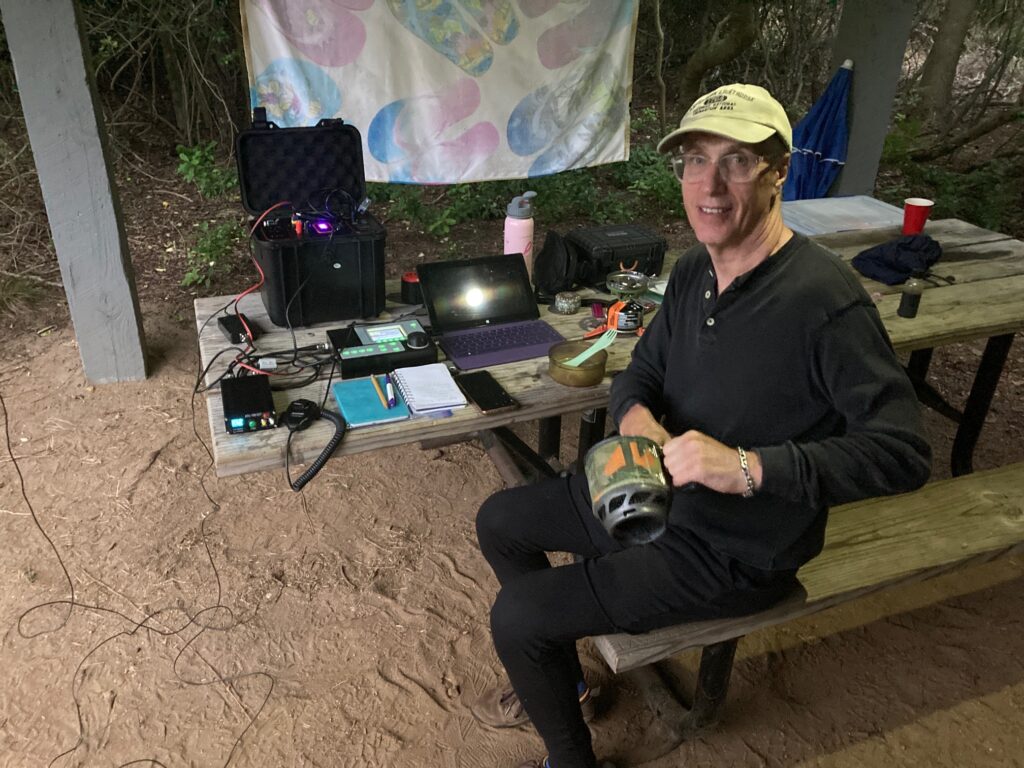
Campsite neighbor Steve, a PhD engineer ex-patriot Brit and defiant leftist, helped MAGA Maniac Josh fix my malfunctioning headlamp, demonstrating that it’s easy to be enemies when separated by keyboards and easy to be friends when living side by side
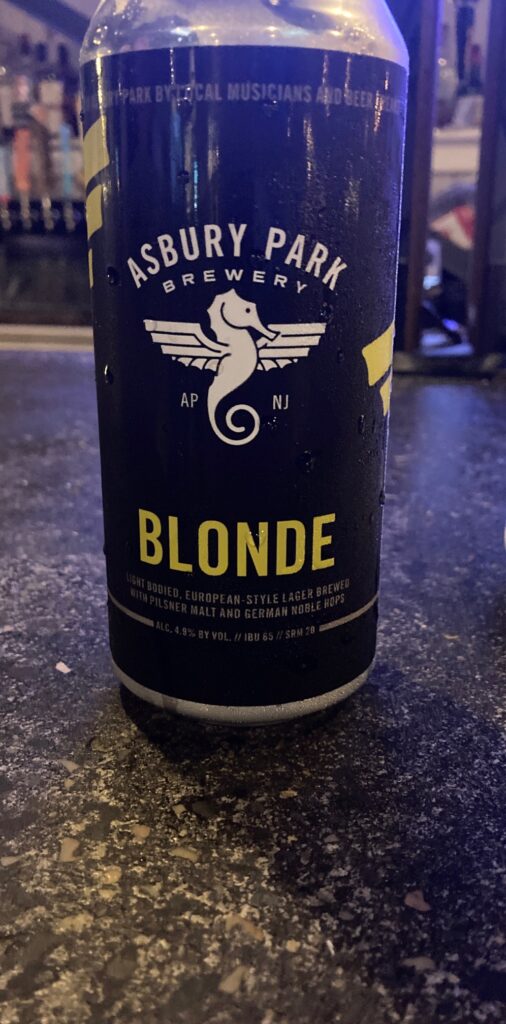
Asbury Park Brewery is a local flavor that I was happy to support. No sign anywhere of Bud Lite or Budweiser anything, thankfully

Symbol of foolish National Park Service policies seeking to protect rare shore birds by excluding people from their habitat, but allowing artificially overabundant populations of nest-raiding raccoons and foxes to roam at will.
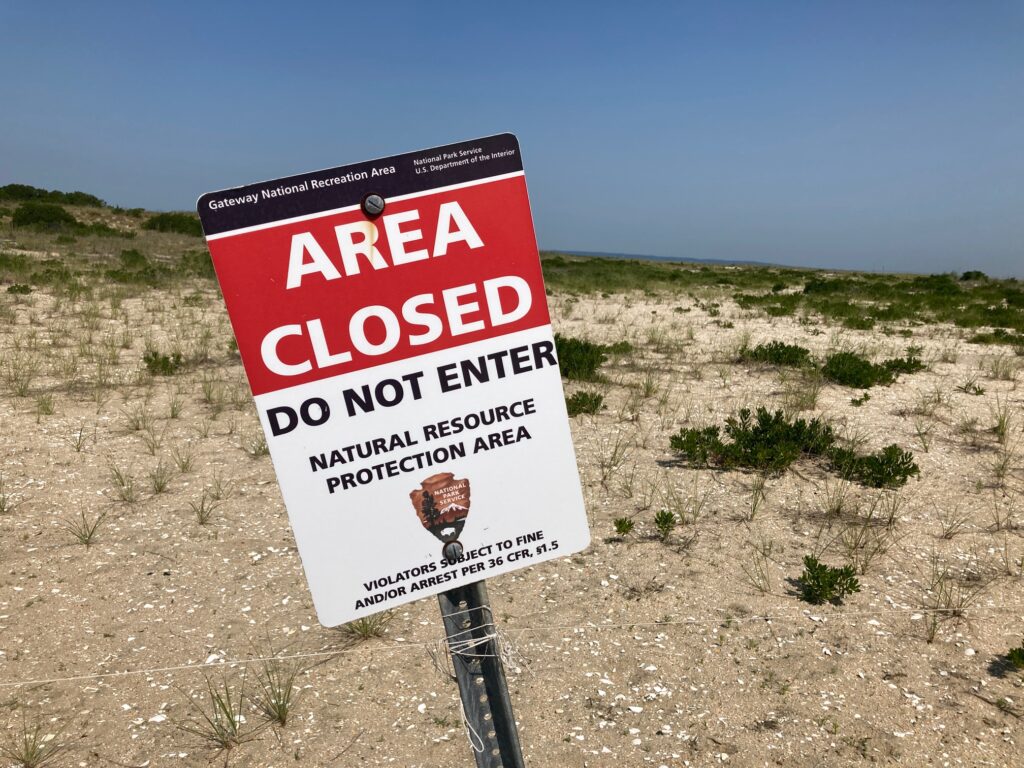
Beach goers nonetheless entered this area because there were zero nesting birds in it and there were literally tons of foxes running around in it. Come on National Park Service, you can do much smarter than this
Turkeys and the critters who eat them
Wild turkeys are one of Pennsylvania’s great conservation success stories. When I was a kid, wild turkeys were like a fable, a mythical animal inhabiting far distant wild lands, that could be seen and maybe heard if you were one of the lucky few. They had been decimated by market hunting in the 1800s and early 1900s. When I took my hunter safety education course at the age of ten at the old Army Reserve building out in the farmland on the east side of State College, the Pennsylvania Game Commission staff proudly showed us films of their successful trap-and-transfer program, where wild turkeys were lured with bait into the range of nets, caught, and then driven to the far reaches of Pennsylvania’s rural areas. Usually State Game Lands with fields.
From the 1970s until the early 2000s, Pennsylvania’s wild turkey population grew and grew, until they seemed to be everywhere, including well south of I-81, the old imaginary dividing line between concrete civilization and wild man country. Apparently turkeys are adaptable to concrete wilderness, because they took up urban residence all over the east coast. Not content with being colorful freeloaders along with the ubiquitous and nasty pigeons and rats in these urban areas from Massachusetts to New Jersey, wild turkeys also provide much hilarity as they attack everything that moves in a display of misguided dominance, including mailmen, soccer moms and their kids, and dogs being walked. Look up the “incident reports” of wild turkey muggings of disbelieving urbanites; lots of funny videos to go along with them, too.
So when turkey populations began to decline in Pennsylvania and parts of New York starting ten years ago, people knew it was not due to the birds’ lack of tenacity. Something new and powerful in the old bird + habitat equation was having an effect.
And in fact in many places here in PA, formerly huge turkey populations are now really low or non-existent. I myself used to look out my windows and watch three separate flocks cycle through our clover-planted yards. When I hunted spring turkeys there (northcentral PA), I would start the day surrounded by gobbling toms, and usually had a couple different opportunities to harvest one within the first few days of the hunting season. It was exciting and fun and a great way to begin the work day, although I will say that by the end of May, I was a hollow shell of a human, having run myself ragged either chasing toms myself, or calling for friends who had not yet filled a tag.
Bottom line is, those old flocks of twenty to thirty birds no longer exist. We are fortunate to see one or two wild turkeys at all on our place. And we have excellent habitat with grouse.
What caused the loss of wild turkeys in PA has generated a discussion similar to the one surrounding the demise of the once amazing world famous smallmouth bass fishery in the lower Susquehanna River. It seems that almost everyone involved has a reasonable opinion about it, and the official experts are being second-guessed by people who have witnessed circumstances different than those described by said experts. The ubiquitous use of trail cameras since 2000 has accompanied this growth in sportsman observational opinion, and very often individual hunters will use their cameras’ footage to make very compelling arguments that contradict official wildlife managers’ narratives.
Something similar happens in the aquatic environment, when thousands of fishermen experience and see something different than what they are being told through official government channels.
So now PGC is toying with the idea of releasing martens into the wilds of Pennsylvania. Similar to the fisher that was released back in the 1990s, martens are a furry little weasel-type animal that, like all weasel type animals everywhere, has an insatiable appetite for everything they can catch and kill. Not necessarily kill and eat. All members of the weasel family (wolverines, fishers, martens, mink, otters, weasels) have periods where they become “surplus killers.” That is, they will kill many more animals than they can eat, just because they seem to enjoy the hunt and the kill. Question being now, What will the new marten do to our turkeys?
Will martens do more of what fishers have so clearly done to PA turkey populations, which is to climb up into trees and eat them while they are roosted and asleep? Will martens only eat turkey eggs? Who knows? And so it follows, why release martens into our forests and farms if we don’t know what impacts they will have?
The question I have, and which I know so many other sportsmen have, is: What kind of studies have been done to date that provide confidence that reintroducing marten will have a net-benefit result, and not a net-negative/cost result?
Most of us agree with government biologists that biodiversity in general is important, and we agree that increasing biodiversity is a worthy goal. But, what are the costs and benefits of doing so? What costs and benefits do marten bring to our forests? I can imagine quite a few costs, mostly impacts on ground nesting birds (like wild turkeys, grouse, pheasant, woodcock, and a zillion species of cute little migratory dickie birds) that are already under tremendous pressure from overpopulating (thanks to urban sprawl) raccoons, skunks, possums, feral cats etc., and I wonder if the benefit of a few hundred citizens annually catching a view of one of these cute and elusive furry weasel-like animals is worth the inevitable costs.
One of the things we must struggle with today is that, as much as we would like to return to the pristine conditions of three hundred or four hundred years ago, where humans had a measurable but relatively minor impact on the environment, the reality on the ground today is totally different. The social carrying capacity among different human groups is one consideration. The carrying capacity of other wildlife is another consideration. I imagine that before people go petitioning or pushing to have these newest predators released back into our forests, we should know what their likely impacts are going to be first. I am willing to sign a petition to have PGC thoroughly study this subject, but I would feel irresponsible to ask the agency to jump before knowing what lies ahead and below.
I will say that I like knowing fishers are in our forests, but I do not like the tremendous impacts they have had on squirrels, rabbits, and turkeys. Everywhere a fisher takes up residence, the small game and turkey populations drop dramatically. Personally, I would prefer to know that there were a few hundred fishers living across Pennsylvania, instead of the thousands we now have that are over-impacting a lot of other equally valuable wildlife (and I enjoy recreationally trapping for fisher every year).
I am not saying that adding martens to Pennsylvania will necessarily be pouring fuel on the fire burning up wild turkey populations, but we really should know. That is the responsible thing to do.
Halfway through PA deer season
We are halfway through deer season, and I, having hunted in several counties in Northcentral and southcentral Pennsylvania, have a few observations. These might be helpful to those seeking to fill tags this coming week, or to policy makers trying to mould a better season next year.
a) Despite the “purple paint law,” which is Pennsylvania’s new private land trespass law that carries severe penalties for trespassing, PA hunters continue to trespass and poach and shoot deer on private lands they have no business being on. So far this season I have been witness to the deliberate taking of deer on private land by people who have no right to hunt there, both a buck and a doe. One incident was just plain sloppy woodsmanship; the other was purposefully crafty. Some trespassers are habitual lawbreakers, who trespass more to get one over (in their warped thinking) on someone who has land, rather than to actually pursue a specific trophy animal or meat for their family. This blurs into the mental illness category. Others are defiant individuals, who have always had authority problems both at work and elsewhere. This also blurs into the mental disease category. The antidote to all this miserable behavior is the joy of hidden trail cameras, which have caught several malefactors in flagrante. Yeah, Jon, you….again. To be continued!
b) Pennsylvania is now a huge deer trophy destination. The trophy bucks that are being taken from archery season, when deer are at their most vulnerable, right through rifle season, would have been unimaginable twenty or forty years ago. The enormous heads (antlers/ racks scoring 140 inches and above) that are being taken by hunters everywhere across the state are easily on par with famous trophy destination states like Illinois, Iowa, Michigan, and Kansas.
This development is a looooong way from the spike bucks and “trophy” fork horns of my youth, and frankly to which too many older hunters would gladly return.
This exciting development is primarily a result of top-notch deer management by the Pennsylvania Game Commission over the past twenty years. Along that twenty-year-way, PGC has suffered a lot of abuse for its deer management, which always involved reducing the number of over-abundant does and retaining a high number of mature bucks to return again next year, with racks that have gone from OK to spectacular. People upset with PGC were long accustomed to “seeing” lots of deer. These people incorrectly equated overabundant deer with a healthy deer population, because, in fact, the truth is the opposite. Too many deer is unhealthy for not only deer, but for a boatload of other animals, and plants, that everybody other than deer needs. Deer diseases like TB and CWD are a result of deer populations too high for their own good. So is the deer-car-collision disease, which is crazy high in PA.
We have to kill a lot more deer. PGC knew that and started it in 2000, and it was a slow and painful process that necessitated an entire cultural shift among tradition-bound hunters.
However, PGC alone doesn’t get all the credit for these big bucks, even though the agency has carried the torch of scientific wildlife management through a hailstorm of undeserved crap. Another reason Pennsylvania has so many massive trophy bucks roaming around is that we have a lot fewer hunters and less hunting pressure over the past five years, and over the past fifty years. There is a big difference between someone who buys a hunting license, because he has been proudly buying a license every year since 1962, as it is part of his personal identity, and someone who buys a hunting license with the intention of squeezing out many of its benefits and opportunities, such as climbing high into remote places in pursuit of huge bucks.
Buying a hunting license is a tradition among many older Pennsylvanians, even if they don’t actually hunt much or at all with it.
If I can think off-hand of five hunters I know who will comment on the dearth of deer hunters seen in the more remote places, I can probably easily find five hundred others who will testify to far less hunting pressure in most places, not just the remote ones. This means that old bucks with big trophy racks have more secret places to go where they can go on growing old, without dying of sudden acute lead poisoning from a hunter standing downwind behind a tree. As the population of really older bucks continues to climb, they begin to spill out into more accessible and less topographically challenged places, where the average Hunter Joes can now occasionally pick one off for the local newspaper’s front page.
c) I miss John R. Johnson as my long time knife maker of choice. John took a break from making his beautiful custom knives about five years ago, and fortunate are those of us who bought his highest-quality products while we could. While it is possible to hunt with a hunk of basic soft steel half-assedly made into a rough knife shape in China, why should we? Ever since the dawn of our species, a hunter-gatherer species, our hunters have ALWAYS prided themselves on the high quality of their weapons and accoutrements. Having a nice rifle and a nice knife is a source of great pleasure for every hunter I know, and most aspire to having the best they can stretch to afford. That is to their individual credit and to our collective credit, as a sign of sophistication and high performance. So if you are fortunate enough to find a JRJ hunting knife somewhere, buy it right away. Cherish it, keep it sharp and well, and use it. It is a product of one of our central Pennsylvania native sons, and a true embodiment of the rugged character and values we here in central Pennsylvania cherish.
Wildlife criminal or wildlife savior?
Unsurprisingly, British customs police noticed Jeffrey Lendrum’s strange looking gut the other day after he disembarked from an international flight. Upon further inspection, the naturally slender Lendrum was caught with a bunch of rare falcon eggs nested against his warm midriff in a fluffy swaddling. The eggs were kept warm and alive by Lendrum’s body heat and the lumpy material, like a mother bird would do while sitting on her nest.
Lendrum is no stranger to doing this, it turns out. For at least three decades, the guy has made some kind of living smuggling rare birds and, unbelievably, their fragile eggs, out of remote countries and from the really super remote, roadless places deep inside them. He has sold the wildlife and eggs to collectors and falconers around the world, but principally in the Muslim Arab countries, where (to their credit) falconry and horsemanship are both highly valued manly skills.
In a way Lendrum is a cross between Indiana Jones, the Pink Panther diamond thief, and James Bond 007, at one time rappelling from a hovering helicopter to steal rare eggs from a raptor’s nest high in a tree in the rain forest. As a result, he has had all kinds of legal run-ins and wild law enforcement encounters throughout his career and literally all around the world.
Brazil has demanded that Britain extradite Lendrum to answer for his latest alleged crime. In a typical British understatement, Lendrum’s lawyer has responded that Brazil’s notorious prisons are in fact violent drug gang headquarters, that the nation has no real rule of law, and that Lendrum’s life would be measured in the half-second were he to be returned there.
And oh, the irony of a nation that cannot stop people from daily executing each other in the streets, that is bargain selling its own rare natural resources and wild areas at break-neck speed to every international nuclear and hydroelectric dam concession, that cannot conserve a chicken let alone a falcon, now demanding some sort of home-grown justice for a white guy who actually values some birds that now live in a place that next year will be a coffee plantation with no bird habitat left.
I am a wilderness hunter and trapper, and I hate wildlife crime. But Lendrum is probably helping ensure the survival of some of these rare bird species who, otherwise left to their own devices in these shithole countries, will be eaten by naked savages for dinner.
Texas has become the home to a dozen rare and otherwise wild species from India and Africa that have been market hunted (not recreationally hunted) into extinction in their native habitat. This is not just because the Texas climate is suitable to these animals, but because hunters pay a boatload of money to hunt these naturally reproducing animals in Texas. A market incentive has kept these endangered species alive and well, if not in the actual ecosystem from whence they evolved.
I am unconvinced that Lendrum is a wildlife criminal. Like the role of zoos has changed from wild animal freak show full of gawkers to sole breeding repository of rare and endangered animals who could never survive in their own home countries, Lendrum is in actuality seeding dying species’ DNA around the planet in the expectation that placing high commercial value on it will lead to people paying to conserve it.
That is, by placing a value on the birds that is much higher than a dinner take-out by a jungle dwelling Indian, Lendum is creating a market-based incentive to keep these species alive and breeding.
Jeffrey Lendrum, wildlife conservationist.
It’s that time of year again
Plenty of things have gone to hell in a hand basket over the course of the last four or five decades, and I would only be living up my highest and bestest reputation as a grouchy curmudgeon if I ticked them all off here as a laundry list of petty grievances. But other writers and commenters have already done all that, much better than I can, so I am going to mention just one frustration. And it must be credited to that mild mannered conservationist Aldo Leopold, who first put his finger on this, on the very beginning of what ails us Americans today.
If I read one more time the overused phrase “In a Sand County Almanac, Aldo Leopold writes…” I am going to scream. You are there and I am here on the other side of the screen, and we cannot actually hear one another, so it will sound like a silent scream, but rest assured, it drives me nuts and right now I am doing my best silent scream imitation about this. Sure, it is a testament to how inspiring Leopold was and still is that so (so) many people begin all kinds of talks and writings and poems with this opener, citing some comment or observation Leopold made back in the crusty 1940s Dark Ages that yet, surprisingly, has so much application and salience today, eighty years later. But it is so very much overused to the point where it is almost maudlin to hear it used yet one more time.
And then, when I think of those intervening eighty years, well, they have been both a blessing and a curse, haven’t they, and so I find myself in that recognizably similar frame of mind…
So what the hell.
In Aldo Leopold’s A Sand County Almanac, he talks about cutting down a large oak tree with a crosscut saw, and how much history is gliding by as the saw blade traverses across the tree stem. For every few growth rings that are sawn, Leopold lists various wars and human milestones, scientific achievements as well as natural science moments, as the blade cuts deeper. Just that description alone is a pretty cool writing achievement by Leopold. It is a symbol and image that so many people have trouble forgetting.
But then at the end of the essay, just when the reader thinks “Yeah, I suppose cutting fire wood is more symbolic and meaningful than I thought it was, guess there’s a lotta history in those old oaks at Grandpa’s farm,” Leopold suddenly gets to the whole raison d’être of his history lesson (and I am closely paraphrasing here):
“I knew Americans were eventually doomed to cultural rot and failure when we discovered that heat came from a small switch on the wall, and not from cutting our own firewood every year.”
Here in the middle of his gentle outdoor lullaby, Leopold lamented the ease of life that had arrived with then-modern conveniences and services. He saw them as a two-edged sword, cutting both ways, for and against, because working hard for something, especially for your own ambient heat in the dead of winter, is an important lesson about how all humans are in truth part of the natural cycles around us all the time. Participating in these cycles humbles us, brings us into the actual healthy swing of things around us, helps integrate us with the earth’s natural vibe, tune, and wavelength, each of which we ride every moment of every day, even if we are unaware of it. And thus, it helps us thereby appreciate the natural world that sustains us every day. Even if we are unaware of it.
Leopold was advocating for Americans living newly cushy lives devoid of physical challenges to get the hell off their asses and live in the real world, to take responsibility for their own needs and not outsource everything (like the Romans did at their end). Cut their own firewood, grow a garden, shoot a grouse for dinner or a catch a fish for lunch. The ability to be self-reliant is not only an American trait from our frontier days, it is innately tied to all successful human cultures at all times.
Mind if we switch here to someone on the other side of the spectrum from our mild naturalist and wildlife biologist Aldo Leopold, who nonetheless expresses much the same sentiment?
“I hate luxury. I exercise moderation…it will be easy to forget your vision and purpose once you have fine clothes, fast horses, and beautiful women. [All of which will result in] you being no better than a slave, and you will surely lose everything.” — Genghis Khan (brutal conqueror of the entire known world in his time).
As that completely successful “mad butcher” said it, luxuries make humans soft and weak. Hard work makes us strong and successful. If there is a hallmark of modern America, it is that we are awash in luxuries and conveniences, to the point where the younger generations have no idea how we arrived here at this point, how much sacrifice was required to give them these fancy phones and coffees. Our younger people think that luxuries and easy comforts just fall like manna from Heaven.
So, to be the truest, best American you can be, why not cut some firewood?
Here in central Pennsylvania it is that time of year again, the time of year where if you have not yet stacked the last of your firewood in the woodshed, you damned well better get on with it. Ain’t no time to lose. Any week now Mother Nature can show up with a big old cold surprise, a major dose of early Winter, knock out the electricity to your town, and leave you at the mercy of serious cold temperatures. It’ll be nice if we have all of October to enjoy mild Fall weather, with no need to light the wood stove, but you never know what the future brings. Better to be prepared, right?
Funny how something so insignificant as cutting one’s own firewood can be synonymous with an entire culture’s success or failure.

Wildlife biologist Aldo Leopold smoked tobacco, owned guns, ate what he hunted, planted a garden every year, and cut his own firewood. If you have not read A Sand County Almanac, then get it, because a world of special delight awaits you there, and it will change your life.
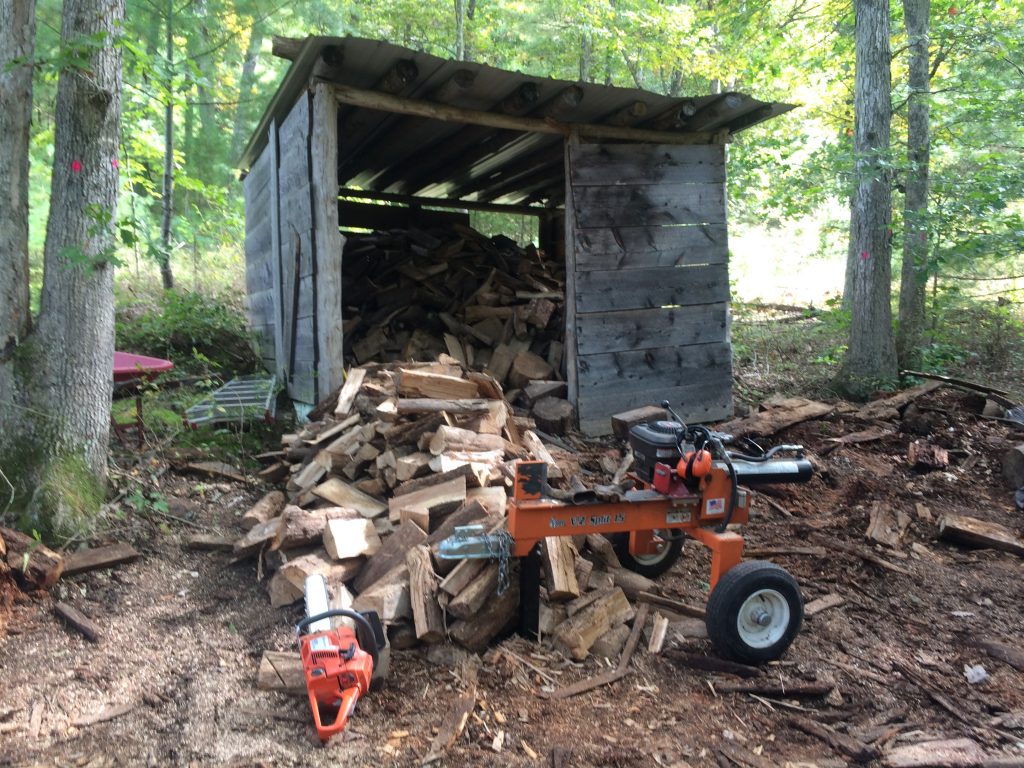
This season’s supply of split firewood stashed in the old woodshed, which is due to be replaced in 2020
PA wildlife: damned if we do, damned if we don’t
Like every other state in the Union, Pennsylvania protects, conserves, and manages its wildlife through a combination of user-pays fees like hunting and fishing licenses on the one hand, and a helping of federal funding collected from user-self-imposed federal taxes on hunting and fishing equipment like boats, guns, ammunition, fishing rods etc on the other hand (the same people who buy the hunting and fishing licenses).
Yes, 100% of the nation’s citizenry benefits from the self-imposed taxes and fees paid by just 1% of the population: the hunters, trappers, and fishermen. Yes, you read that right: just 1% of the population is carrying 100% of the public burden.
And yes, as you are correctly about to say out loud, you and I will not see this bizarre and totally unsustainable arrangement in any other area of public policy. Not in roads, not in schools, not in airports, not in museums, not in anything else official and run for public benefit. And so, yes, it is a fact that wildlife agencies across America are perennially underfunded, and have been for so long that it’s now accepted as the way America does its wildlife business. Here in Pennsylvania, despite endless rising costs and endlessly more expensive public pensions, both houses of the PA legislature have long blocked the PA Game Commission from getting a hunting license increase in decades. So the PGC is even more behind the financial Eight Ball than most other state wildlife agencies. Hunters and wildlife managers in other states look at Pennsylvania and shake their heads. It doesn’t have to be this way, but it is.
Despite the obvious imbalance and weakness inherent in such a unique and faulty funding arrangement, for fifty years this approach worked pretty well, nationally and in Pennsylvania, with some states occasionally putting new money into holes that opened up in the regular wildlife funding support. Those states with significantly increasing human populations tend to be forced into dealing with inevitable wildlife-human conflicts more than other states, and when Mr. and Mrs. America are increasingly hitting deer with their cars, you can bet that they will demand their home state do something about it. So more money is found.
So along comes the Pennsylvania Auditor General, to investigate the management and expenditure of money at the PGC. And why not, right? The PGC is a public agency, and hunting license revenue is a public trust. So sure, go ahead, look into it, audit the agency. And so it was done, and some interesting things emerged just a bit over a week ago.
In the “Atta boy” column is the fact that there appears to be no corruption, graft, or misuse of scarce sportsmen’s dollars at the PGC. By all accounts, PGC is transparent and well run. Given how much the sportsmen are always scrutinizing the agency, we all figured as much. But it is nice to have our beliefs and trust confirmed like this. We love the PGC even more today than before the audit.
In the “Aww shucks” column is the revelation that PGC staff do not immediately deposit oil and gas royalty checks when they are received, nor does the PGC ascertain for itself if those royalty payments are accurate in the first place, instead trusting the oil and gas companies to do what is right on their own. Hmmmm….This is a potential problem area, and we are all glad the auditors found it. Anyone who knows the PGC can bet money on the fact that PGC staff are right now doing all of this payment followup with a vengeance. Look out, oil and gas companies!
But then there is the big weird issue, the biggest issue of all, where the auditors “discover” that the PGC is sitting on $72 million in the bank. And accordingly, the auditors immediately and erroneously ascribe this to bad money management. After all, they say, public money is meant to be spent. “If you got ’em, smoke ’em,” goes the ancient and totally irresponsible government approach to managing public dollars. After all, under normal budgeting culture, agencies that do not spend the money budgeted to them risk losing those dollars in the next budget cycle. Failure to spend money is correlated with a failure to implement an agency’s mission, and for senior agency managers, there is the usual ego factor; the bigger the budget, the bigger the…you know. This is the old approach to managing government funds, and it is wrong, and it certainly does not fit the PGC’s reality or targeted way of doing business.
Let’s ask you a question: If you knew your family was going to be receiving less and less money going forward, and yet your family costs would be held steady, wouldn’t you begin to bank any extra money you had, in preparation for lean times ahead? If your family is responsible, then yes, this is what you do, it is what we all do. And it is what the PGC has done, thankfully.
But as a result of the audit, this single fact is being used to beat on the agency, to coerce the PGC to adopt unsustainable policies and irresponsible money management, despite the agency sailing through ever less sustainable funding waters every day. Seems like now every elected official and every Monday morning quarterback sportsman has some variation on the foolish theme that PGC has more money than it knows what to do with. Wrong!
So the real outcome of the audit is that Pennsylvania wildlife are damned either way, because the PGC is the useful straw man whipping boy for every aspiring demagogue in Pennsylvania politics. No matter what the PGC does, our wildlife resources are going to suffer. If PGC carefully, frugally husbands its limited resources, preparing for rainy days and needy wildlife, then the agency’s critics say the agency is miserly and hoarding, and they seek to punish the agency. And on the other hand, if the PGC immediately spends every dime it has, and has no money left over to deal with yet more unfunded mandates like Chronic Wasting Disease, then critics say the agency is wasteful and ineffective, and they seek to punish the agency.
And either way, the net result is the PGC’s critics damn and condemn our wildlife. Because that is the true result of all this second-guessing and monkeying about with the PGC budget and funding streams. Plenty of elected officials use their criticism of the PGC to artificially burnish their “good government” credentials, when in fact they are demanding the worst sort of government, and a total disservice to the sportsmen and wildlife everyone enjoys.
Many years ago, sportsmen were organized enough to react strongly to political demagogues who threatened our wildlife resource (and PA’s $1.6 billion annual hunting economy) with their petty politics. This latest iteration of the politics of wildlife management indicates that we need to get back to the old days, where sportsmen were unified and forceful, even vengeful, in their expectation that their elected officials would not politicize or hurt our commonly held wildlife resource.
The Ups and Downs of Pennsylvania’s Status as Trophy Hunting Destination
When I was a kid deer hunting, you would find a comfy seat somewhere under a hemlock or on a stump, and wait for the deer to storm by. The deer would eventually pass by in herds like caribou on the tundra, so many that you often lost count. Almost all were does, which were mostly off limits to hunting back then, and what you were looking for were any signs of antlers. Any flash of white on top of the deer’s head meant it was a buck, and therefore legal for harvest.
No matter how puny, how scrawny, how insignificant the antlers were, “getting your buck” was the goal, and several generations of Pennsylvanians were raised hunting in this low quality atmosphere. Herds of deer far beyond the carrying capacity of the landscape were the norm, as were pathetic excuses for a trophy, usually spike bucks or Y four-pointers, at best.
Fast forward forty years and Pennsylvania is now a true trophy hunting destination. It is unbelievable, really, the incredible successes in wildlife management our state has had. And every one of these achievements has come from outstanding planning by state wildlife biologists over decades.
For example, every year for the past fifteen years we have had bear harvests ranging from 3,000 to 4,000 animals, mostly taken within a three or four-day season. Some of our bears, a fairly high proportion, are gigantic, weighing from 500 to 800 pounds. These are eastern black bears the size of western grizzly bears; but they taste a lot better and they lack the aggressive personality of grizzlies.
Other examples of our wildlife management success are the trapping opportunities for otter, fisher, and bobcat, all of which were exotic, unimaginable, almost alien creatures when I was a kid. Someone you knew had seen one at some point in the woods, but they did not show up in traps, or dead on the roadside. Now? These three charismatic, very cool predators are either common or becoming common across Pennsylvania. There are enough of them to begin to alter prey populations, and forest growth, which means there are surpluses for sportsmen to pursue.
And our wild elk! Other states like Kentucky may have newer, much larger herds of wild elk than Pennsylvania, but they do not have the large human population or oversized road system we have here. Kentucky and the other states that have recently added wild elk can sustain larger herds. Nonetheless, Pennsylvania sees about 100 elk harvested annually, many of which are gigantic trophies on par with the best of western herds.
Finally, the biggest wildlife management success is our deer population. And it is our most controversial.
I have had a good deer season this year. Really, an outstanding deer season, in every way. Quality, quantity, time afield, hunting companionship, family time, scenic and remote places…what a fantastic few weeks it has been. How fortunate am I to have had this time, and it is only possible because Pennsylvania Game Commission biologists have done such an outstanding job of managing our deer populations (Quality Deer Management Association recognized the PGC this year with an award for its incredible deer management).
Here is an example of the controversy surrounding deer hunting here. After sending a photo of one of the deer I took, using a beautiful 1935 German double-barreled rifle made at the peak of German sporting arms engineering, my older friend Jack wrote back to me “If you are not careful, you will clear your mountain of all game.”
In past years Jack has hunted with me at our place and would testify to the high quality deer we have cultivated there. Nonetheless he is anxious about harvesting “too many” deer.
And right there in his statement is the rub, the issue, the friction in our wildlife management here, overshadowing all other successes. Older generations tend to see does as sacred cows, off limits to harvest, whereas the younger generations tend to view deer management through the lens of biology, mathematics, and both habitat and social carrying capacity.
Never mind the other species listed above, just the high quality deer hunting alone makes Pennsylvania a true trophy hunting destination. People are now harvesting gigantic bucks unimaginable fifteen years ago, and that are big enough to hold their own against the long-time trophy deer hunting states like Kansas, Iowa, Illinois and Ohio. Pennsylvania’s deer management is working incredibly well, giving hunters a quality-over-quantity choice that works for today’s hunters and that rankles older generations used to “more is better.”
Deer hunting has gotten so good that, despite much stronger anti poaching laws, people are still going nuts trying to illegally hog up trophy bucks, afraid that if they do not get it, someone else will. Not too many years ago a fine young game warden was gunned down by a night poacher who was determined not to go back to jail (he did). Last week two 57-year-old men were caught shooting at deer from ATVs, and their reaction was to badly beat the deputy game warden and take his gun. They, too, are now in jail.
Older Pennsylvanians seem slow to catch on to our new status as a trophy destination. They act as if does must still be protected (they need not), and as if there are only a couple trophy bucks that must be poached before “someone else steals my buck.” In his recent book To Conserve and Protect: Memories of a Wildlife Conservation Officer, retired game warden Steve Hower recounts some of his experiences dealing with this backwards mindset.
Past PGC executive director Vern Ross used to say at every opportunity he had “Now, today, is the golden age of hunting in Pennsylvania!” Vern was correct then, and even more so now, as hunting opportunities are even better than when he was at PGC.
At some point the vast majority of our hunters will recognize and appreciate what an incredible thing we have now, right now, and instead of complaining about it, they will enjoy it and do what they can too support the PGC.
Some photos below from our bear and deer seasons; the buck photos are from the five minutes I was there on the second night of rifle season at Blue Mountain Deer Processing in Enola, PA. Just look at those incredible heads and huge steer-like bodies! Wow. Unthinkable not too long ago.
“Think those are big? You should have seen the huge ones that poured in here yesterday, on Opening Day,” said Dean Deimler, owner of Blue Mountain Deer Processing.
I have heard of several 160-inch and bigger racks being taken in the mountains, where too many people say “there ain’t no deer.” Like a lot of people, I would rather have a shot at a lifetime trophy buck of 160 inches than see a zillion scrawny spikes and forkhorns.
The young man is my son, who climbed high and steep right along with the adults, handling his firearms expertly and safely, himself taking three deer in two states this season and hunting bear as an adult for the first time. And that is the other ‘trophy’ from deer hunting…watching that next generation grow into an activity as old and as natural as our species.
Thank you to wildlife’s friends, my friends
When I started writing for Eric Epstein’s Rock the Capitol about eight years ago, one of the first stories I related to readers was an experience two of my children and I had with two pitbulls let off their leashes.
The readership statistics on this one essay were off the charts. Very high volume, and lots of comments. When I asked why, Eric and his website manager, whose name I now forget, told me that news items and stories involving animals claim the biggest share of attention on the Internet.
Fascinating, right?
And we all kind of see this fact in the strange way people routinely show concern for an injured goat in the news by donating a million dollars so the goat can get its broken hoof fixed, and then a truly sad situation involving some news story about a poor unfortunate child whose abusive parents tormented her for years raises just five bucks to get her into a better home.
It is true that people care about animals, and that is a good thing. But this care seems to extend mostly, really overwhelmingly, to domesticated animals; animals that depend upon humans for care and shelter. A natural and healthy empathy is aroused when some unfortunate critter is seen hemmed in by wire or caging, unable to provide for itself and yet not being provided for by the humans around it.
The type of animals people have the least identity with is wildlife. Most Americans, being urban or suburban, simply mythologize wildlife.
From this more urban view, all bears are universally perceived as aggressively dangerous (they are not, though grizzlies are definitely more aggressive than black bears). Deer run out in front of our cars, eat our crops, spread ticks with Lyme Disease, and nibble our yard shrubs, dammit. Squirrels are nasty tree rats with fuzzy tails chewing on our yard furniture, eating the produce of our gardens and fruit trees, and diving our trash bins. And skunks, possums and raccoons are a bunch of rabies-ridden trashcan raiders. And so on.
Wildlife by and large is not greatly appreciated by the general public, unless it is a close-up photo of some baby raccoon or fox kit. And no, I am not talking about wildlife photographers or the insane Humane Society as representative of the general public. These two categories of people are far distant outliers of one sort or another, and no generality can be drawn from their presence among or about wildlife.
So thank God there are sportsmen out there; that is, hunters and trappers. These are the Americans who really do truly care for and about wildlife, and they prove it every damned day with their financial donations and back-breaking work on wildlife habitat projects.
There is no better advocacy group or aggregation of active people who love wild animals and the wild places they need to thrive than hunters and trappers. Time has proven this fact, though the foolish flatlander will claim, with a mouthful of gross stockyard beef in her mouth, that hunting and trapping are “cruel.”
Most of our public lands were first acquired by and for hunting and trapping, at the urging of hunters and trappers. They knew in the 1890s and 1920s that human encroachment into formerly wild areas was leaving no room for the most interesting animals on earth. Many of these animals are more interesting than most of the humans we will encounter in any given day, week, month, or lifetime.
This weekend I really enjoyed my time among a special group of people, the state-wide leadership of the Pennsylvania Federation of Sportsmen and Conservationists (PFSC), what until yesterday was known as the Pennsylvania Federation of Sportsmen’s Clubs (PFSC). Most Americans no longer know that the word “sport” is about hunting, fishing, and trapping, nor do they know what a ‘sporting club’ is about. The lexicon has changed as the daily experience has changed. Meat is no longer acquired from a wild animal who knew it was hunted, but rather from a miserable creature tormented from its earliest days until its last moment alive and turned into a convenient styrofoam package.
The PFSC folks are the people who work every day for the benefit of wildlife, for wildlife habitat, for the defense and promotion of our state parks, state forests, and state game lands. These people do it humbly, quietly, generously, and usually all they get in return is some self-satisfaction from sitting back after a grouse hunt and, despite an empty game bag, intently watching a mysterious red Fall sunset streaked with white wispy trailing clouds sinking down behind shadowy trees shedding their colorful leaves. A deeply comforting stillness overtakes these people at these moments, alone or with companions, and when they go home that night, they know their decades of work fundraising for the latest land acquisition by the Wildlands Conservancy has paid off. It might be a relatively small nook in a big world, but it is a special nook nonetheless, where wildlife — wild animals unknown and unloved by most people — can call home until the next glacier comes through and re-orders the earth’s surface, as has already happened many times in the past.
Here is to you, a heartfelt thank you, my friends, my companions, my betters and my teachers among the outdoorsman fellowship. Thank you for your time and gift to me and to everyone and every living thing around me, whether they know or know not what you do for us.
